Blog categories
Blog archive
RSS Blog posts tagged with 'decor'
Blog Filters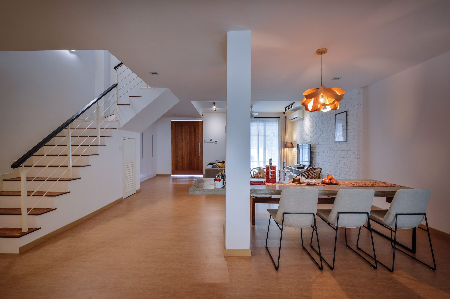
4 Ways to Use a Bench in the Dining Room
Friday, November 20, 2020
Create more space with a bench at the dining table and camouflage the arrangement with these tips.
You may have deliberately sought out a bench as a novel form of seating, or you might already possess a bench needing new purpose—either way, incorporating a bench into your dining arrangement could do more than free up some space. A bench helps to create a casual and intimate atmosphere for meals, and in place of two side chairs, takes up significantly less space. The extra floor space can then go towards greater clearance around the dining table, providing generous elbow room for diners, or even cabinets for additional storage options. If you are faced with an especially compact dining space, read on, as you may find one or two practical ideas for slipping a bench into your dining arrangement.
Island Ally
 Interior design by: Yong Studio
Interior design by: Yong Studio
Having found an available wall against which to set your dining arrangement, your next concern would be to ensure the furnishings complement the surroundings. In the pictured home decorated by Yong Studio, the bench is composed from wood that is similar in shade and grain to the floor of the kitchen. This exercise in unification is applied to the other components of the dining arrangement: the table features unobtrusive legs of minimalist design, while the material of its surface is echoed on the other side of the wall in a diminutive shelf, and in the background, with the kitchen island.
 Interior design by: Yong Studio
Interior design by: Yong Studio
Luxury Lines
As benches typically entail the absence of a back, the natural impulse in dealing with a bench would be to place it alongside a wall for back support. The wall-hugging arrangement, however, does more than free up space: beyond the practical consideration of ergonomics, the linear arrangement demonstrated by Surface R takes advantage of the Helmholtz illusion—a concept popularly applied in fashion to skew the perception of body contours. Just as with waistlines, the array of straight lines makes the pictured dining space seem wider and brings the furniture arrangement into golden proportions with the long and narrow space.
 Interior design by: Surface R
Interior design by: Surface R
Tip: The Golden Ratio is one of the few aesthetic rules, if not the only one, that governs everything from the composition of art to the distribution of leaves along a branch. To form the most visually appealing composition possible, divide the length of a rectangle by the width and you should arrive at a figure approaching the Golden Ratio (φ = 1.618).
 Interior design by: Surface R
Interior design by: Surface R
Divide & Conquer
 Interior design by: Jashen Interior Design
Interior design by: Jashen Interior Design
In tighter quarters, the placement of a dining surface against the wall is often necessary to preserve enough space for comfortably manoeuvring around the arrangement. In such a configuration, the substitution of two side chairs for a single bench frees up even more space, but requires that the bench be pulled out when needed and stowed when not in use. As Jashen Interior Design demonstrates with the pictured home, a wall bisecting the open layout is utilised as a background for the dining arrangement, with the bench tucked between the table legs to leave enough width for a walkway.
 Interior design by: Jashen Interior Design
Interior design by: Jashen Interior Design
 Interior design by: Jashen Interior Design
Interior design by: Jashen Interior Design
Focal Feature
 Interior design by: Jashen Interior Design
Interior design by: Jashen Interior Design
The open layout entailing fewer bisecting walls by definition, you may be hard-pressed to find a wall-hugging spot for your bench-augmented dining arrangement. If you find no free walls available, there exists the possibility for creative expression with a built-up partition. Without a readily available wall in the pictured open layout, Jashen Interior Design incorporates the bench side of this dining arrangement into a false wall built largely to serve as a decorative feature and primary focal point for the space. To keep the divider from overwhelming the open layout, a sizable portion of the wall is rendered reflective.
 Interior design by: Jashen Interior Design
Interior design by: Jashen Interior Design
Tip: While projecting walls may detract from the spaciousness of an open layout, the up-side is that any interruptions to the open layout you design will automatically become a point of focus in the scene and another available plane to embellish with messages or functional additions.
 Interior design by: Jashen Interior Design
Interior design by: Jashen Interior Design
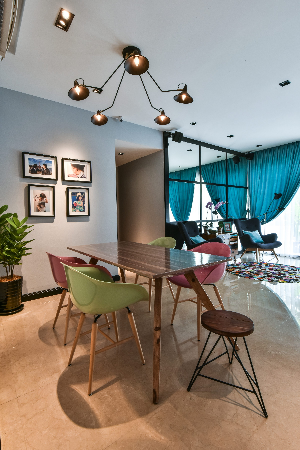
How to Select the Best Dining Table for Your Dining Room
Friday, November 20, 2020
The dining table is most often the central feature of dining spaces, contributing the most towards the décor by virtue of their size - which makes their selection all the more crucial.
The dining room is probably the one part of a home that sees the most people at any time - and whether people are just passing through or sitting down for meals, the table will have an impact on how diners perceive the space, the home, and the homeowner. As the selection of dining room furniture will likely be an event that does not occur very often, we wanted you to be as informed as possible before you set out on your journey towards your new dining table.
Material
 Interior design by: Viincology
Interior design by: Viincology
The kind of material that your dining table is made out of will have an effect on its lifespan and its appearance. Long-lasting materials such as hardwoods, metals, tempered glass, stone, and even mould-injected plastics are preferred for dining tables that are expected to endure many years of heavy use. Conversely, lightweight or flat-pack furniture composed of veneered wood composites such as plywood or fibreboard are made with mobility and affordability in mind, these materials are preferred for short-term arrangements by virtue of their being easier to pack and transport by design.
 Interior design by: Viincology
Interior design by: Viincology
Lightweight composite materials such as plywood or fibreboard are known to be significantly less durable, as they show a tendency to warp when subjected to excessive moisture or heat. Tougher natural materials such as hardwoods and stone tend to be porous, which entail regular maintenance with coats of varnish or sealer to prevent unintended staining from everyday use.
 Interior design by: SNG Conceptwerke
Interior design by: SNG Conceptwerke
Due to their being porous and softer than metal, wooden surfaces entail a greater degree of care to ensure their longevity. Oil-based varnishes should be applied to wooden surfaces at the point of manufacture - and periodically afterwards to prevent unintentional staining. Despite the higher level of maintenance required, metal furnishings tend to rust - especially when used outdoors, while wooden furnishings take on a characteristic smoothness and polished sheen as they age.
Size
 Interior design by: Hoe & Yin Design Studio
Interior design by: Hoe & Yin Design Studio
Having too large a table surface will result in a cramped dining space, while restricting diners to a small surface leads to elbows bumping in uncomfortably close quarters. It is the recommendation of most decorators to provide each diner with around 60 to 70 centimetres (or 24 to 28 inches) of space for adequate elbow room, and around 90 centimetres to 1.3 meters (or 36 to 50 inches) between a dining table and the surrounding walls for diners to comfortably get in and out of their seats.
Shape
 Interior design by: IDS Interior Design
Interior design by: IDS Interior Design
The shape of your dining table will determine the number of diners you can host and will affect the space it occupies. While round tables are capable of accommodating a greater number of diners, they tend to appear larger in small dining spaces - the conventional rectangular dining table takes up the most space, needing long and narrow spaces to avoid appearing overly large.
 Interior design by: IDS Interior Design
Interior design by: IDS Interior Design
To calculate the number of diners appropriate for a round table: multiply the diameter of a table by the value of Pi (π: 3.14) and divide the result by the amount of space needed for each diner. Using the previously mentioned minimum of 60 centimetres (or 24 inches) of space needed per diner, a round table with a diameter of 1.5 meters can easily accommodate 7 diners, or up to 8 diners with a negligible reduction in elbow room - while a rectangular table of similar size (at 1.5 meters long) can only seat a total of 6 diners – one at each end and two along each length.

Creating a Well-Composed Dining Room
Friday, November 20, 2020
Whether you have a large formal dining hall or a small area for daily mealtimes next to the living room, here’s how to put together different interior features to ensure your dining room looks and feels good from every angle.
 Interior design by: The Roof Studio
Interior design by: The Roof Studio
Whether you’re hosting a family dinner or just getting together for a weeknight meal, the dining room is where people come together. From modern to classic, there are many ways to turn this room into a cosy space that is perfect for entertaining your guest in comfort and style. Gone are the days when you need to have matching tables and chairs at your dining table. The trend is to go for features that complement each other. If you are going for a modern look, aim for furniture that has clean lines and sturdy material. Also, make good use of tableware to pull it all together.
Palette Play
It's easier to create a well-designed dining room when you have a strong starting point to guide you - this is where having a colour palette in mind can really help you focus on the elements you can use. If you love a certain colour and have a particular hue in mind for your dining room, start with this colour.
 Interior design by: The Roof Studio
Interior design by: The Roof Studio
For example, yellows are a great way to create a bright and vibrant dining space. Start with light yellow for the walls, then add on bolder shades of complementary tones like blues. However if you are not confident about using bold colours, go for a neutral and monochrome palette, like the dining room pictured here.
Accent Pieces
Don't just stop at tables and chairs in the dining room. If you have space, accent furniture like a console or an armoire can work wonders to help create a focal point and enhance those blank walls that envelope your dining area. However, choose something that blends with your dining table.
 Interior design by: Chaplins Furniture
Interior design by: Chaplins Furniture
In this dining room, a bright blue console works beautifully to bring attention to the table. The decorative accessories and mirror above the console add a lively look to the atmosphere. The bold pendant lamps are also just the perfect features to balance off the the space.
Material Maneuver
 Interior design by: Mode Interior Style
Interior design by: Mode Interior Style
Mixing and matching different materials in the dining room can offer a dramatic yet personalised effect to your space. Balance is key, as you don't want a single material to overwhelm the rest. Also offset hard and sturdy surfaces with soft furnishing to give your space a sense of cosy warmth.
 Interior design by: Mode Interior Style
Interior design by: Mode Interior Style
In this dining room, there is a bold variety of materials ranging from solid wood and faux grass to brick-like finishes on the opposite wall. The addition of the marble-like feature wall balances off the dark-coloured surfaces. The use of wood flooring just around the dining space also helps to demarcate the space clearly.
Vibrant Variety
Another way to mix materials is through a variety of different seating and surfaces. Mix-and-match seating works well when each chair or bench is of a similar style and shape. Also think about what you use as centrepieces on your dining table.
 Wood and ratan are making a huge comeback in the dining room, but those from the lighter range are preferred. Go for a Zen effect but break from the monotony with stronger tones and textures. Interior design by: iDecorate
Wood and ratan are making a huge comeback in the dining room, but those from the lighter range are preferred. Go for a Zen effect but break from the monotony with stronger tones and textures. Interior design by: iDecorate
In this warm and neutral dining room, the woven rattan chairs bring a sense of similarity to the entire set, but if you look closely, every single piece is individual in style. To further enhance the room, a tableware set with a similar look and feel is used.
Trendy Tableware
 Interior design by: iDecorate
Interior design by: iDecorate
Finally, complete your dining room with beautiful tableware to bring everything together. When it comes to choosing a dinnerware set, the choice is usually a matter of personal taste. It’s a necessity for any table, but it also sets the mood for a meal. For example, formal china can make a momentous occasion feel even more special, while basic stoneware is a good match for a low-fuss weeknight dinner.
 Colour coordinate your tableware by having a neutral backdrop and then enhancing it with bolder tones through colourful plates, bowls, and mug. Interior design by: Dunelm
Colour coordinate your tableware by having a neutral backdrop and then enhancing it with bolder tones through colourful plates, bowls, and mug. Interior design by: Dunelm
In the example here, a white dinner set complemented by green accents bring out a nature-inspired theme that enhances the wood dining table. To add texture, fabric placemats tone down the hard surfaces and introduce a lush quality to the space.
 Interior design by: Dunelm
Interior design by: Dunelm
Article by: Lily Wong
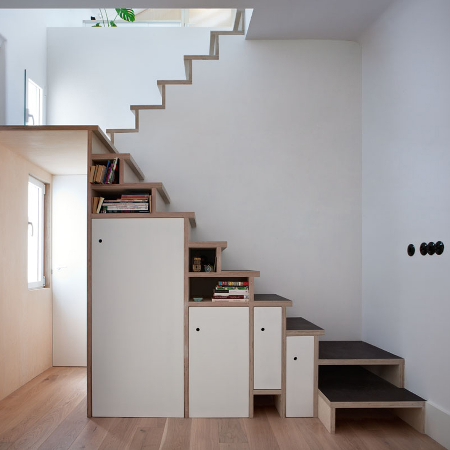
Step Storage: 7 Creative Under-Stairs Storage
Friday, November 20, 2020
The empty space under the stairs sometimes gets a bad rap on account of the many stories depicted in film that paint this potential storage space as a nest of insidious horror - or at the very least, a place of relative obscurity where things go to be forgotten. But in this modern age of urban living - where gratuitous space typically comes at a premium, we felt it be prudent to look at these spaces under the stairs in a new light, in order to discover novel ways of incorporating storage options.
Climbing Cabinetry
 Image Credit: Buj+Colón Arquitectos
Image Credit: Buj+Colón Arquitectos
In a compact space where a full-fledged staircase would have been overwhelmingly large, a lightweight stairway is formed out of progressively taller cabinets and bookshelves, with an intermediate split-level landing simplistically projecting from the top of the cabinetry. The result is deliberately left without a railing to achieve an unobtrusive stairway that is ingeniously disguised as storage.
Footwear Hideaway
 Image Credit: Post Architecture
Image Credit: Post Architecture
The act of removing one’s shoes when entering a home has transitioned from being a distinctly Asiatic custom of tradition to a practical measure in many urban homes around the world - which necessitates considerable storage fixtures to be incorporated at the entryway. The pictured shoe drawers, designed by Toronto-based Post Architecture, enable a sizable family’s worth of shoes to be neatly stowed away in the unassuming space beneath the stairs.
Stairway Stack
 Image Credit: Schemaa Architects
Image Credit: Schemaa Architects
While a stairway with a steep incline may present a formidable barrier to the upper floors, the complete use of extra space for cabinetry helps to disguise the risers and treads of the pictured loft-style staircase. To soften the gradient of the stairway, Schemaa (a Parisian architecture firm) incorporates intermediate blocks of wood to break up the high risers of the steps - resulting in a more graceful incline.
Aperitif Alcove
 Image Credit: DIY Network
Image Credit: DIY Network
An alternative to wholly dedicating the space under the stairs to storage is put forward by the DIY Network’s Watson Hawkins. The idea entails moving beyond pure storage and adding a facet of functionality to the space. In the pictured example, nearby countertops are extended to the space beneath the stairs, with cabinetry truncated at an angle to match the slope of the stairway’s carriage.
Sequestered Office
 Image Credit: Translina
Image Credit: Translina
For the majority of those who often find themselves working at a desk while at home, the extra headroom often goes to waste during those hours seated at a desk. Rather than dedicating an entire room to a home office and letting that overhead volume go unused, the pictured staircase incorporates a diminutive office space - where the lower clearance serves to neatly encapsulate the work corner.
Foyer Fixtures
 Image Credit: Minimalist Desk
Image Credit: Minimalist Desk
Walking out of the front door is a ritual that often gets repeated whenever a necessary object gets left behind - with the procedure often followed by dashes up and down the stairs to retrieve some forgotten item. The entryway often gets cluttered with catch-all containers and furniture as a result. The pictured stairway holds an ordered array of wicker baskets in niches beneath the carriage to negate the clutter and hide vital containers from sight.
Hidden Habitat
 Image Credit: Basement Remodeling
Image Credit: Basement Remodeling
Spaces deemed too small for a human to utilise can be handed over to our smaller companions instead. With their uniquely low-lying perspectives, even the smallest of burrows can shelter whole landscapes that are worlds apart from their larger environment. The pictured stairway accommodates a desk just wide enough to be used (by a human) for writing letters - with the extra headroom dedicated to wine storage, while the extra space to the side goes to one lucky quadruped.
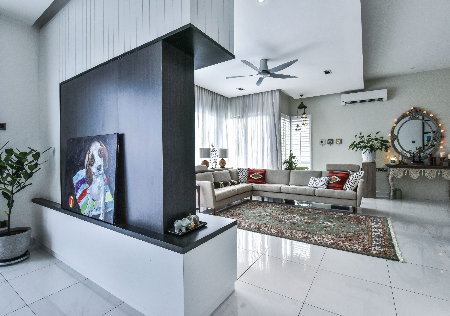
How to Decorate With Living Room Accessories
Friday, November 20, 2020
Strike a balance between functional additions and decorative frills to reflect the detailed complexity of life.
Perhaps for reasons that will never be fully explained, a blank canvas will attract a painter’s brush and masterpieces will come to be appreciated for their details more than the sum of their parts. Just as most prized paintings began as blank canvases, a living space sometimes starts off as a sparse array of furniture and accessories, increasing in complexity with time as the signs of life accumulate within it. A barren living space can be easily remedied with the addition of a lighting fixture or a piece of artwork to draw the eye - but if you seek to design an elegant living space layered in intriguing complexity from the beginning, then read on.
Personal Touch
 Interior design by: M Innovative Builders
Interior design by: M Innovative Builders
Sentiment binds us together with shared meaning despite our individual differences, with personal significance and nostalgia occasionally representing greater value than even the most commonly treasured of material objects. Aside from all the known characteristics that make up the range of decorative styles prevailing in our present time, the single most influential factor that differentiates an interior is self-expression. The designers of the pictured seating lounge, M Innovative Builders, demonstrate this philosophy in practice by bringing together favoured and seemingly disparate decorative elements to produce a space that is uniquely cohesive and tailored for the comfort of the residents.
Fine Details
 Interior design by: The Roof Studio
Interior design by: The Roof Studio
Bland spaces tend to have little to say, but adding a handful of details in the background - or a few comforting accessories such as a coffee table or clutter tray in the foreground, imbues a space with layers of complexity to capture attention and entice the wandering mind. The Roof Studio demonstrates the striking effects of imposed detail by decorating this living room with an abundance of wooden surfaces and placing them in close proximity to the high-pile carpeting. The result is an elegant array of layers that evokes interest with complementary details in texture and shade.
 Interior design by: The Roof Studio
Interior design by: The Roof Studio
Tips: The addition of a few accessories does more than provide some comfort. Without the necessary amenities (throw cushions, floor lamp, end table, coffee table, clutter tray, and potted plant), the result would potentially resemble a furniture showroom rather than an actual living room.
 Interior design by: The Roof Studio
Interior design by: The Roof Studio
Repeat Motifs
 Interior design by: ST Concepts
Interior design by: ST Concepts
The pursuit of elegance entails a delicate balance struck between grace and ingenuity, necessitating careful consideration when selecting colours and materials. As decoration is simultaneously an art and a science, the creation of a décor should be subjected to creative and logical guidelines to achieve a cohesive and visually appealing arrangement. In the pictured seating lounge decorated by ST Concepts, complex layers of wood, stone, and light are created with a sprinkling of decorative and functional accessories - all unified in the complementary shades of the neutral palette so as not to overwhelm the eye with dissimilar elements.
 Interior design by: ST Concepts
Interior design by: ST Concepts
Tips: When you want to shy away from bold and colourful patterns, texture is your best friend. Neutral is never boring when a variety of textures are used. Mix it up! Repeating the same pattern throughout a room is also a reliable way to achieve cohesiveness.
 Interior design by: ST Concepts
Interior design by: ST Concepts
Art Aesthetics
 Interior design by: X Dimension Design
Interior design by: X Dimension Design
Handcrafted artistic works represent countless hours of effort and are often valued for their uniqueness and irreproducibility - even more so in this age of automated manufacturing. The introduction of artwork does more than provide a splash of colour or texture - art has the potential to evoke emotion, inspire thought, and invite critique, with the results leading to a discernible rise in the complexity of a space and its character. To illustrate this, X Dimension Design incorporates serene landscapes into the décor of the pictured living room, with the artwork diligently curated to echo the hues of the space.
 Interior design by: X Dimension Design
[gallery columns="2" size="medium" ids="59194,59195"]
Interior design by: X Dimension Design
[gallery columns="2" size="medium" ids="59194,59195"]
Light Up
 Interior design by: Sachi Interiors
Interior design by: Sachi Interiors
Large pieces of furniture and glittering artefacts tend to draw the gaze of naïve observers - occasionally, to the detriment of a sparsely decorated space. Lighting fixtures are useful add-ons that serve to simultaneously highlight subtle decorative features and direct the eye away from default points of attention. In the pictured seating lounge, Sachi Interior Design opts for an intriguing floor lamp fitted with a robust diffusing shade to at once illuminate the furniture arrangement and throw an array of light and shadow into a corner for a visually striking effect.
 Interior design by: Sachi Interiors
Interior design by: Sachi Interiors
Tips: Even neutral coloured spaces can benefit from a beguiling display of light and shadow. This living room presents additional variations of the neutral shades with the aid of prominent lighting fixtures.
 Interior design by: Sachi Interiors
Interior design by: Sachi Interiors
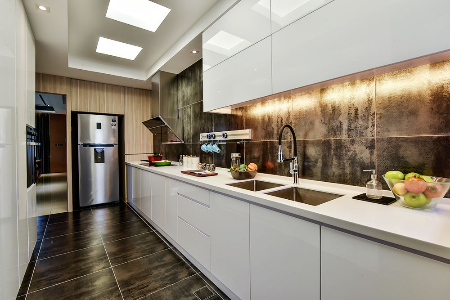
Counter Balance: How to Choose the Best Kitchen Countertop Surfaces
Friday, November 20, 2020
With all the various materials available for kitchen countertops, we figured you could do with some pointers on how to choose the most appropriate surface to suit your needs and your décor, so we gathered our team of experts and let them loose in our kitchens to help us put together what has turned out to be the internet's most definitive guide on materials for kitchen countertop surfaces.
Kitchen countertops can be formed out of completely natural or synthetic materials, or even some combination of both - all presenting different challenges. Your choice of material may be dependent on its colour and appearance, or what that selection says about your personality - but a forward-planning homeowner should also consider cost, availability, workability, durability, and maintenance needs before settling on a choice of a particular material.
 Designer: Craftsmen Valley
Designer: Craftsmen Valley
First of all, before settling on a particular material for surfaces that may become permanent fixtures in your kitchen, one should view and feel samples or mock-ups in person rather than depending on images to be accurately representative - as camera lenses, photo filters, and imaging algorithms sometimes do unpredictable things when reproducing real-life examples.
Laminates Since Formica® was popularized in Europe in the 1950s, laminates have made reappearances in the 1970s and in modern times to affect vintage interiors. Being a material largely composed of sheets of textile or fabric soaked in plastic resins, laminates are easily the most affordable material for kitchen surfaces. Various colours and textures are easily attained with the addition of pigments or thin sheets of natural materials into the compositions, meaning that the availability of laminates is likely the highest among all other materials. However, laminates will fade in direct sunlight and despite their highly synthetic composition, they do not stand up well to excessive moisture or corrosive chemicals such as some cleaning fluids. Although reputed to be susceptible to scratches and to scorching at high temperatures, laminates using modern formulations of resins have greatly increased their resistance to burns and scratches, as well as other forms of wear and tear in recent years.

Designer: IKEA
Wood The warming tones and grains of wood are ideal for creating a rustic or country atmosphere, working equally well when set within modern décors as accents. Wood is simple to work with, a fact that any high school student who has been subjected to woodworking classes can attest to. Wood is also highly workable, enabling curved surfaces that cannot be matched by the majority of engineered materials. Due to their natural origins and versatility in a wide range of interiors, wood is highly priced and limited in availability, meaning that finding large amounts of matching tones and grains may be a challenge. This much sought-after natural material requires a greater degree of care to maintain on account of its relative softness and porosity: wood is easily scratched, although the damage can be removed with sandpaper, but water is perhaps a wooden surface's worst enemy - requiring coats of varnish and regular doses of wood oil to seal gaps and prevent water from seeping in, which would result in the wood rotting from the inside and smelling of a wet forest.
 Designer: Casa Indah Design
Designer: Casa Indah Design
Concrete Countertops composed of cement and aggregate have been spotted making a resurgence in modern interiors ranging from minimalist to industrial. Relatively low in cost and high in availability, concrete surfaces can be customized in a wide variety of ways. Due to their initial liquid-like slurry state, concrete surfaces can be dyed with pigments, trowelled to form seamless curves, stamped with designs, pressed for marbled veins, or polished to a smooth finish. Concrete surfaces are highly resistant to scratches when fully set, but care should still be taken around this material as it can warp or even crack with extreme fluctuations in temperature, it also discolours with moisture and is susceptible to etching by mild acidic solutions. Due to their porosity when cured, concrete surfaces must be maintained with coats of sealer regularly applied every few months to prevent staining.
 Designer: Nevermore Design
Designer: Nevermore Design
Stone Natural stone such as granite, and softer stone such as marble, limestone, or soapstone have been popular in the last few decades, due in part to their timeless beauty and unique patterns. Natural stone has to be quarried from the handful of locations around the world known to be fortunate enough to have these beautiful materials thrust through the crust - as a result, the cost of acquisition is relatively high and dependant on the stone's origin and appearance, with availability being almost never guaranteed. Granite is the most durable, but like the rest of the popular stone materials, their natural porosity requires regular maintenance in the form of sealing coats.
 Designer: FIX Design Solutions
Designer: FIX Design Solutions
Solid Surface Typically composed of two-thirds mineral dust and one-third polymer resins, solid surfaces are perhaps the most versatile of all stone-based materials. Solid surfaces can be dyed with pigments and shaped into seamless curves in the same manner as concrete. Due to their composition being based on a by-product of quarrying activities, solid surface materials entail a reduced environmental impact, and they are relatively affordable in comparison to natural stone. Softer than granite, solid surfaces can be scratched - but the damage can be removed by sanding and polishing. Unlike natural stone, solid surfaces are non-porous and do not require sealing at the manufacturing level and little to no maintenance. Availability and installation may be an issue with this material, as the ownership of the high-technology facilities required to manufacture and install solid surface countertops are restricted to a few select entities.
 Designer: Havana Konzept
Designer: Havana Konzept
Quartz On the most durable end of the scale is quartz - often called engineered stone, which is composed of crushed stone that would otherwise have been discarded but is instead mixed with pigments and polymer resins to bind them together into the toughest possible material for your countertop. Quartz has been often touted as the material most resistant to scratches and heat, due to the high proportion of stone relative to synthetic materials in the composition of kitchen countertops. The dependence on unwanted stone rather than quarrying new materials makes quartz a more eco-friendly choice when compared against natural stone. The challenges with quartz are few, but considerable in importance: due to their manufacture being dependant on supplies of crushed stone, their cost is likely the highest among all other materials, availability in particular colours or styles may be limited, and by virtue of their hardness - quartz is the heaviest and most difficult material to install without professional assistance.
 Designer: Caesarstone
Designer: Caesarstone
Steel The preferred choice of serious chefs everywhere, steel stands up best to scratches and chemicals - especially when provided with a protective coating composed of polymers or carbon molecules. Various grades of steel are churned out from all corners of the globe, making this material one of the most available - but the heavy equipment and high level of expertise required to work steel into the forms necessary for kitchen countertops makes for relatively difficult and costly custom installations.
 Designer: Officine Gullo
Designer: Officine Gullo
Detailing and Finishes Once you have juggled all the various considerations that go into selecting the material for your kitchen countertop, its appearance, cost, availability, workability, durability, and maintenance needs - you cannot forgo putting some thought into the kind of detailing and finishes you want. Consider details such as bevels or curves to soften hard edges, and polishing the surface smooth for a reflective sheen, or dull for a matte finish to downplay the surface's prominence. You could even take things to the next level by mixing materials together: think a wood block framed in stone, for example.
Click here to see some more kitchens!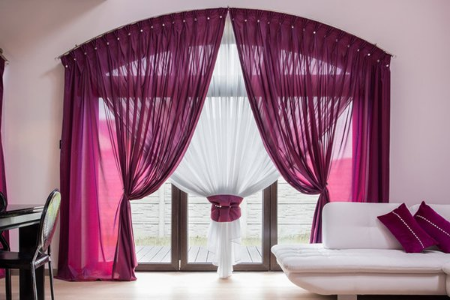
Curtain Luxury: How to Choose The Right Kind Of Curtains for a Luxurious Ambience
Friday, November 20, 2020
Nothing gives your living room a more sensual and luxurious look than high quality curtains. Functional yet decorative, the right kind of curtains can transform any room almost instantly. Here are some tips to keep in mind when choosing curtains to glam up your living rooms. Style and Colour Factor
Are you going for a classic look or a breezy one? Starting off with a key style helps to narrow down your curtain fabric choices which play an important role in creating the ambience you desire. It's a good idea to create a moodboard, pairing your chosen colour palettes with fabric samples. For ideas, you can browse through magazines or drop by a curtains showroom like Curtains Place to check out the window treatments on display.
Style and Colour Factor
Are you going for a classic look or a breezy one? Starting off with a key style helps to narrow down your curtain fabric choices which play an important role in creating the ambience you desire. It's a good idea to create a moodboard, pairing your chosen colour palettes with fabric samples. For ideas, you can browse through magazines or drop by a curtains showroom like Curtains Place to check out the window treatments on display.
 Image from Curtains Place
Fabric that Fits
Most rooms would benefit from cotton and linen, but if you want an opulent ambience, heavy fabrics like suede and velvet are the ideal choice. Think about the level privacy that you desire - for more private spaces, heavier fabrics are suitable. If you want to bring in light or have a hint of the views outside, opt for sheer curtains that are made from lightweight materials. Heavier fabrics offer a blackout effect, and create a more formal, sophisticated ambience, while lighter materials give off a casual and airy vibe. Most importantly, always go for high quality curtain fabrics so they are longer lasting and give you a more elegant look. For instance, Curtains Place provide a wide variety of both and light and heavy curtains that are made from a variety of eye-catching, quality fabrics.
Image from Curtains Place
Fabric that Fits
Most rooms would benefit from cotton and linen, but if you want an opulent ambience, heavy fabrics like suede and velvet are the ideal choice. Think about the level privacy that you desire - for more private spaces, heavier fabrics are suitable. If you want to bring in light or have a hint of the views outside, opt for sheer curtains that are made from lightweight materials. Heavier fabrics offer a blackout effect, and create a more formal, sophisticated ambience, while lighter materials give off a casual and airy vibe. Most importantly, always go for high quality curtain fabrics so they are longer lasting and give you a more elegant look. For instance, Curtains Place provide a wide variety of both and light and heavy curtains that are made from a variety of eye-catching, quality fabrics.
 Image from Curtains Place
Image from Curtains Place
 Image from Curtains Place
Curtain Types
There are many types of curtains out there to suit your space requirements. One of the popular ones are panels with rings from which ringed curtain panels hang from rings that are attached to the top of the fabric panel or inserted into the fabric near the top part. As the rod is exposed, it's important to use an attractive wooden or metal rods with beautiful finials at the end of the rod. Box and pinch pleats are also great choices for a more tailored and formal look.
Image from Curtains Place
Curtain Types
There are many types of curtains out there to suit your space requirements. One of the popular ones are panels with rings from which ringed curtain panels hang from rings that are attached to the top of the fabric panel or inserted into the fabric near the top part. As the rod is exposed, it's important to use an attractive wooden or metal rods with beautiful finials at the end of the rod. Box and pinch pleats are also great choices for a more tailored and formal look.
 Image from Curtains Place
Image from Curtains Place
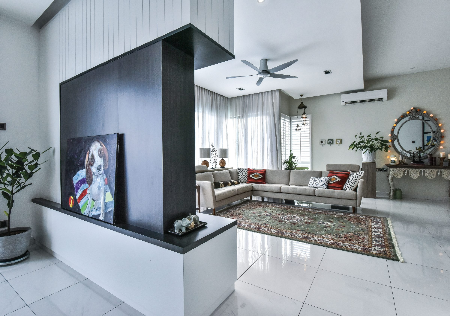
How to Decorate With Living Room Accessories
Friday, November 20, 2020
Strike a balance between functional additions and decorative frills to reflect the detailed complexity of life.
Perhaps for reasons that will never be fully explained, a blank canvas will attract a painter’s brush and masterpieces will come to be appreciated for their details more than the sum of their parts. Just as most prized paintings began as blank canvases, a living space sometimes starts off as a sparse array of furniture and accessories, increasing in complexity with time as the signs of life accumulate within it. A barren living space can be easily remedied with the addition of a lighting fixture or a piece of artwork to draw the eye - but if you seek to design an elegant living space layered in intriguing complexity from the beginning, then read on.
Personal Touch
 Interior design by: M Innovative Builders
Interior design by: M Innovative Builders
Sentiment binds us together with shared meaning despite our individual differences, with personal significance and nostalgia occasionally representing greater value than even the most commonly treasured of material objects. Aside from all the known characteristics that make up the range of decorative styles prevailing in our present time, the single most influential factor that differentiates an interior is self-expression. The designers of the pictured seating lounge, M Innovative Builders, demonstrate this philosophy in practice by bringing together favoured and seemingly disparate decorative elements to produce a space that is uniquely cohesive and tailored for the comfort of the residents.
Fine Details
 Interior design by: The Roof Studio
Interior design by: The Roof Studio
Bland spaces tend to have little to say, but adding a handful of details in the background - or a few comforting accessories such as a coffee table or clutter tray in the foreground, imbues a space with layers of complexity to capture attention and entice the wandering mind. The Roof Studio demonstrates the striking effects of imposed detail by decorating this living room with an abundance of wooden surfaces and placing them in close proximity to the high-pile carpeting. The result is an elegant array of layers that evokes interest with complementary details in texture and shade.
 Interior design by: The Roof Studio
Interior design by: The Roof Studio
Tips: The addition of a few accessories does more than provide some comfort. Without the necessary amenities (throw cushions, floor lamp, end table, coffee table, clutter tray, and potted plant), the result would potentially resemble a furniture showroom rather than an actual living room.
 Interior design by: The Roof Studio
Interior design by: The Roof Studio
Repeat Motifs
 Interior design by: ST Concepts
Interior design by: ST Concepts
The pursuit of elegance entails a delicate balance struck between grace and ingenuity, necessitating careful consideration when selecting colours and materials. As decoration is simultaneously an art and a science, the creation of a décor should be subjected to creative and logical guidelines to achieve a cohesive and visually appealing arrangement. In the pictured seating lounge decorated by ST Concepts, complex layers of wood, stone, and light are created with a sprinkling of decorative and functional accessories - all unified in the complementary shades of the neutral palette so as not to overwhelm the eye with dissimilar elements.
 Interior design by: ST Concepts
Interior design by: ST Concepts
Tips: When you want to shy away from bold and colourful patterns, texture is your best friend. Neutral is never boring when a variety of textures are used. Mix it up! Repeating the same pattern throughout a room is also a reliable way to achieve cohesiveness.
 Interior design by: ST Concepts
Interior design by: ST Concepts
Art Aesthetics
 Interior design by: X Dimension Design
Interior design by: X Dimension Design
Handcrafted artistic works represent countless hours of effort and are often valued for their uniqueness and irreproducibility - even more so in this age of automated manufacturing. The introduction of artwork does more than provide a splash of colour or texture - art has the potential to evoke emotion, inspire thought, and invite critique, with the results leading to a discernible rise in the complexity of a space and its character. To illustrate this, X Dimension Design incorporates serene landscapes into the décor of the pictured living room, with the artwork diligently curated to echo the hues of the space.
 Interior design by: X Dimension Design
[gallery columns="2" size="medium" ids="59194,59195"]
Interior design by: X Dimension Design
[gallery columns="2" size="medium" ids="59194,59195"]
Light Up
 Interior design by: Sachi Interiors
Interior design by: Sachi Interiors
Large pieces of furniture and glittering artefacts tend to draw the gaze of naïve observers - occasionally, to the detriment of a sparsely decorated space. Lighting fixtures are useful add-ons that serve to simultaneously highlight subtle decorative features and direct the eye away from default points of attention. In the pictured seating lounge, Sachi Interior Design opts for an intriguing floor lamp fitted with a robust diffusing shade to at once illuminate the furniture arrangement and throw an array of light and shadow into a corner for a visually striking effect.
 Interior design by: Sachi Interiors
Interior design by: Sachi Interiors
Tips: Even neutral coloured spaces can benefit from a beguiling display of light and shadow. This living room presents additional variations of the neutral shades with the aid of prominent lighting fixtures.
 Interior design by: Sachi Interiors
Interior design by: Sachi Interiors





